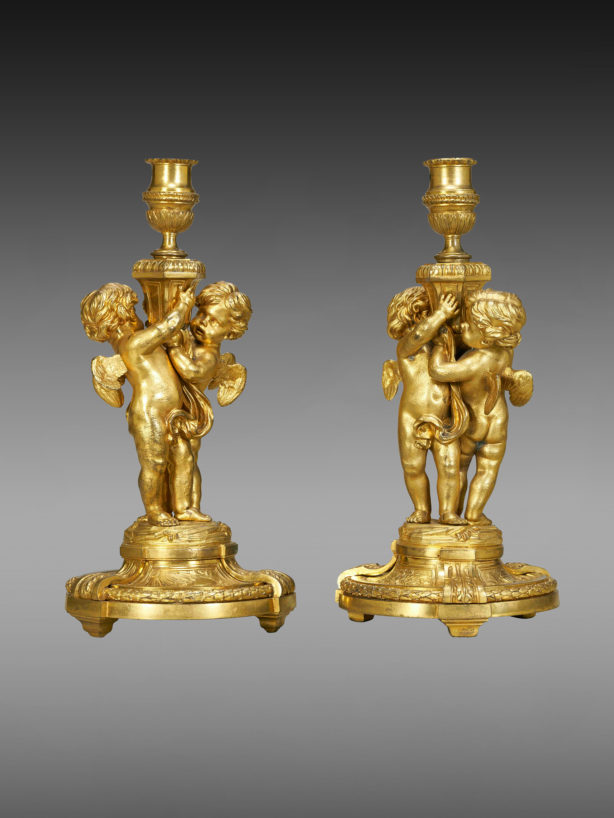Pair of candlesticks
Of extraordinary quality, our highly sculptural torches are an elegant representation of the link between the novelty and originality of the Louis XV style, and the return to classical inspiration of the Louis XVI style, known as the Transition period, in the years 1760-1770.
Each torch is formed by a pair of winged putti, twisting together to support the wick with their arms. A drape slips between them to hide their nakedness and accentuate the movement.
Both rest on a mound reminiscent of a rock, itself supported by a wide, elaborately carved base adorned with clasps, acanthus leaves and a laurel torus. The flat surround is decorated with bas-reliefs evoking Antiquity and the Greek taste: antique-style vases, quivers of arrows and lightning bolts or a radiant sun.
Jean Louis Prieur (1732-1795) was one of the most important bronzemakers and ornamentalists of the period. His activity began at the zenith of the craze for Greek taste in the mid-1760s.Prieur, who became a master sculptor in 1765 and a master foundryman in clay and sand in 1769, was an influential ornamentalist in the new classical style. He is perhaps best known for a series of designs he supplied for gilded furniture and bronzes for the Polish Court in Warsaw in 1766, among the most important neoclassical commissions of the period.Prieur also supplied a series of architectural gilded bronzes for Chartres Cathedral.
Putti similar to those of our torches appear on a number of Prieur’s drawings, as well as on gilded bronze objects executed according to his designs: pendulums, consoles, candelabras, torches, vases, andirons etc. Chubby-shaped, with protruding bellies, they were a key element in the artist’s decorative language.




